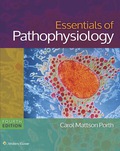
A.
To determine: Thesymptoms that would lead to the belief that an individual has flu.
Introduction: Influenza is the disease associated with the respiratory tract. It is transmitted through coughing, sneezing. The virus replicates in every 48 hours after contraction and resides in the nasopharynx.
A.
Explanation of Solution
The symptoms of flu include fever, running nose, headache, bodyache, burning eyes, and sore throat. The individual who exhibits all of a few of these symptoms can be diagnosed with flu. The flu can be due to viral infection or bacterial infection. The incubation period of flu is about 1-3 days that can be managed with medications.
B.
To determine: The rationale behind the ineffectiveness of antibiotics in treating flu.
Introduction: Influenza virus is the most common form of viral disease, which is highly contagious and spread from one individual to another through a variety of means like infected objects, coughing, sneezing, and so on.
B.
Explanation of Solution
The common cold or flu is mainly caused by viral infection belonging to a category of rhinovirus, which causes running nose, headache, bodyache, sore throat, and fever. This common cold cannot be treated by antibiotics because these medications do not eliminate the virus from the host as they only act on bacteria and other microbes.
The symptoms disappear when the viral pathogen leaves the body and moves into the surrounding. Therefore medications like analgesic, anti-inflammatory can help relieve the symptoms and not eliminate the target pathogen.
C.
To determine: The reason that the flu vaccine does not prevent the disease from happening later on in life.
Introduction: Vaccines are described as one of the most effective forms of preventive treatment given against disease-causingmicroorganisms. The vaccines are prepared by killed pathogenicorganism or their live attenuated (weakened) forms.
C.
Explanation of Solution
The flu vaccine consists of live attenuated bacteria that can help prevent the flu from occurring in a short period. However, in a span of a longer period, the disease can affect the vaccinated individual because the flu from a virus is resistant to the vaccine. So the virus can easily enter the body through coughing, sneezing or fomites contaminated from an infected individual.
D.
To determine: The reason for suspicion on flu pandemic similar to the one spread from 1917 to 1918.
Introduction: The word pandemic implies a disease that spreads to a larger area covering a vast population causing many causalities at a particular period in time. The condition differs from epidemic as the epidemic spreads over a small geographical area, but pandemic covers the majority of areas of the world hence impacts global populations.
D.
Explanation of Solution
The influenza pandemic started in the year 1917 and continued until the year 1918. However, in recent years it is speculated that the coming decades can face similar situations. This is because of antibiotic resistance and an increase in the mutation rate of viral pathogens.
Due to antibiotic resistance, the bacteria are becoming more resistant and tolerable to the available antibiotics, therefore, causing deaths from previously treatable diseases. The increase in mutation rate in viral pathogen also contribute to the decrease in the recovery of the flu patients, thereby escalating the risk of a pandemic.
Want to see more full solutions like this?
Chapter 22 Solutions
EBK ESSENTIALS OF PATHOPHYSIOLOGY
 Human Anatomy & Physiology (11th Edition)BiologyISBN:9780134580999Author:Elaine N. Marieb, Katja N. HoehnPublisher:PEARSON
Human Anatomy & Physiology (11th Edition)BiologyISBN:9780134580999Author:Elaine N. Marieb, Katja N. HoehnPublisher:PEARSON Biology 2eBiologyISBN:9781947172517Author:Matthew Douglas, Jung Choi, Mary Ann ClarkPublisher:OpenStax
Biology 2eBiologyISBN:9781947172517Author:Matthew Douglas, Jung Choi, Mary Ann ClarkPublisher:OpenStax Anatomy & PhysiologyBiologyISBN:9781259398629Author:McKinley, Michael P., O'loughlin, Valerie Dean, Bidle, Theresa StouterPublisher:Mcgraw Hill Education,
Anatomy & PhysiologyBiologyISBN:9781259398629Author:McKinley, Michael P., O'loughlin, Valerie Dean, Bidle, Theresa StouterPublisher:Mcgraw Hill Education, Molecular Biology of the Cell (Sixth Edition)BiologyISBN:9780815344322Author:Bruce Alberts, Alexander D. Johnson, Julian Lewis, David Morgan, Martin Raff, Keith Roberts, Peter WalterPublisher:W. W. Norton & Company
Molecular Biology of the Cell (Sixth Edition)BiologyISBN:9780815344322Author:Bruce Alberts, Alexander D. Johnson, Julian Lewis, David Morgan, Martin Raff, Keith Roberts, Peter WalterPublisher:W. W. Norton & Company Laboratory Manual For Human Anatomy & PhysiologyBiologyISBN:9781260159363Author:Martin, Terry R., Prentice-craver, CynthiaPublisher:McGraw-Hill Publishing Co.
Laboratory Manual For Human Anatomy & PhysiologyBiologyISBN:9781260159363Author:Martin, Terry R., Prentice-craver, CynthiaPublisher:McGraw-Hill Publishing Co. Inquiry Into Life (16th Edition)BiologyISBN:9781260231700Author:Sylvia S. Mader, Michael WindelspechtPublisher:McGraw Hill Education
Inquiry Into Life (16th Edition)BiologyISBN:9781260231700Author:Sylvia S. Mader, Michael WindelspechtPublisher:McGraw Hill Education





